The movement of the project so far has been a little bit slow and I have definitely learnt the importance of just getting out there and shooting photographs. This has always been my struggle when I first endeavor on a new project as I find I just want to go out the first time and take good photographs. However reflecting on this, I know it is important to get the ideas flowing and develop from that going into the future of this project.
At the beginning of the brief I wanted to get inspiration from the stories that have come out of Dartmoor prison. Dartmoor, is one of the local areas that I find fascinating and has a lot of potential with the style of photography that I do. It also has a lot of history and stories that are great starting places for photographic narratives.
For this first shoot I have gathered inspiration from the notorious criminal Frank Mitchell. Mitchell was serving a sentence in the Dartmoor prison when he befriended Ronnie Kray, an East London gangster with a big reputation in the underworld of London. During Mitchell's trial for attempted murder, Ron hired a lawyer for him and paid for him to have a new suit fitted. Ron was keen on breaking Mitchell out of prison, thinking it would help him to publicise his grievance and earn a release date, as well as enhance the Krays' standing in the underworld. Reg Kray recalled that he was reluctant, but finally reasoned that "if nothing else it would stick two fingers up to the law". Reg visited Mitchell at Dartmoor in disguise and informed him of the plan. On 12 December 1966, while with a small work party on the moors, Mitchell asked the sole guard for permission to feed some nearby Dartmoor ponies. His request was granted, he walked over to a quiet road where a getaway car containing associates of the Krays – Albert Donoghue, "Mad" Teddy Smith and Billy Exley – were waiting for him, and they drove to London, where the Krays put him up in a flat in Barking Road, East Ham. It was over five hours before Mitchell was reported missing.
Mitchell's escape made national news, led to a political storm over the lax security around a man described in the press as "Britain's most violent convict", and was debated in the House of Commons. A large manhunt ensued, with 200 policemen, 100 Royal Marines and a Royal Air Force helicopter searching the moors. With the aid of Teddy Smith, Mitchell wrote to national newspapers and his plea to be granted a release date was printed in The Times and the Daily Mirror. However, Home Secretary Roy Jenkins was not willing to negotiate with an escaped felon and would not review his status until he was back in custody.
Mitchell soon became a problem for the Krays. Owing to his physical strength and short temper, he was difficult to control. He was unwilling to give himself up and return to prison, and was not allowed to leave the flat in case he was recognised. The Krays feared releasing him or turning him in as he could implicate them in his escape. Mitchell felt insulted that Reg had only visited him in person once and was particularly upset that he could not visit his parents, despite them living nearby. He grew increasingly agitated and began making threats against the Krays. To placate him, they brought a woman to the flat: Liza Prescott, a blonde night club hostess, with whom Mitchell soon became enamored, further complicating the situation. The Krays decided the only solution was to kill him.
https://en.wikipedia.org/wiki/Frank_Mitchell_(prisoner)
The Plan
As the story goes for Mitchells escape off the Moor, he escaped around the Baggar Tor area of Dartmoor after being apart of a small team fixing the firing range markers. There was an escape car on a small country road that the Kray brothers had organised for him, he was then never seen again by the public.
For this shoot I am going to return to the Baggar Tor area to take my photographs. I plan on taking some self portraits to try this first idea out before I ask someone else to stand in front of the camera for me. I would like to create some cinematic images where the narrative of the story is shown in one photograph. For this, I would like to create photographs that explore both the idea of Mitchell running away and him finding the getaway car. I plan on shooting my images at dusk so that I can use my van headlights to spotlight myself in front of them. At the moment, this is an exploration of ideas and my plan is to return to this idea once I have figured the building blocks of the shoot.
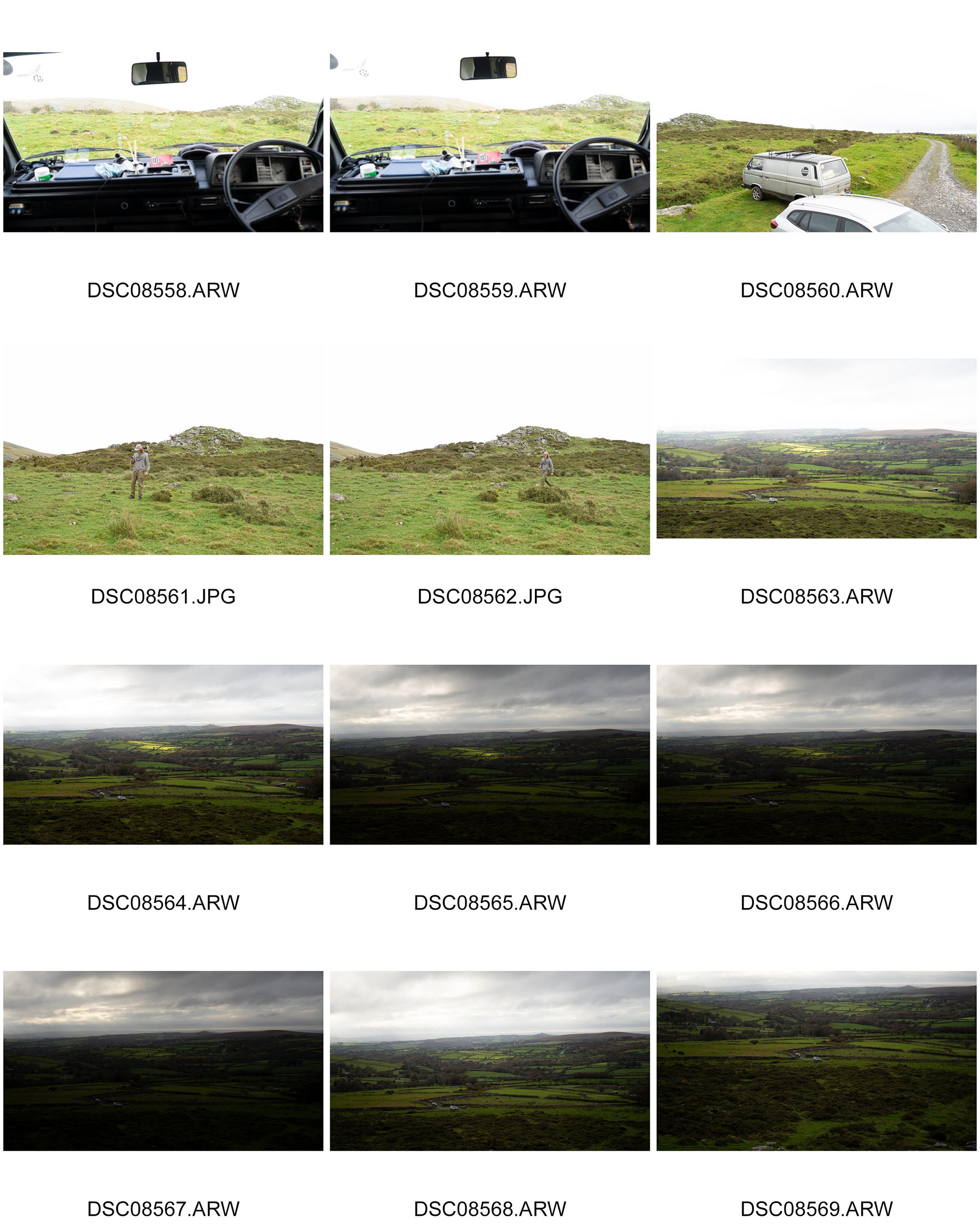
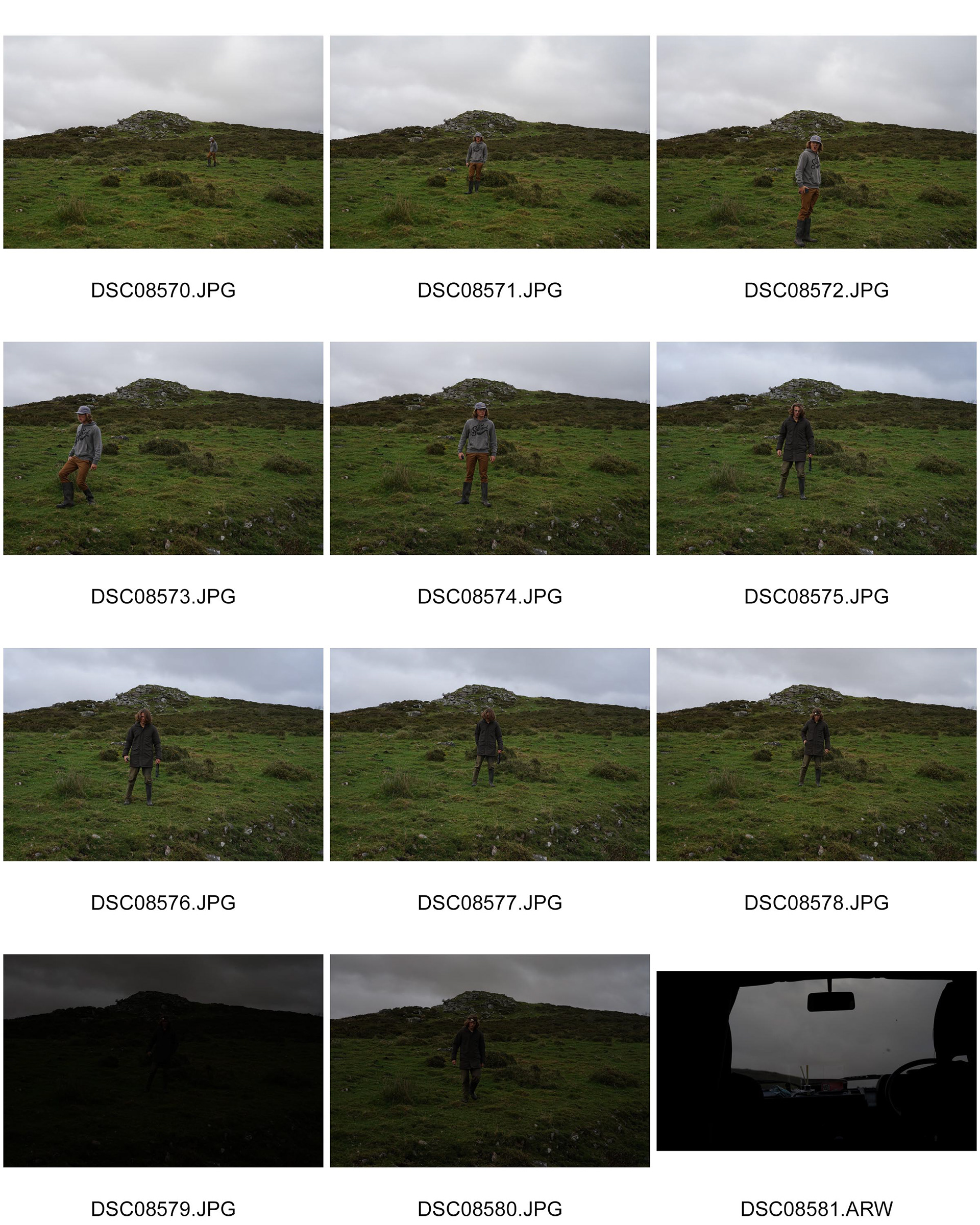

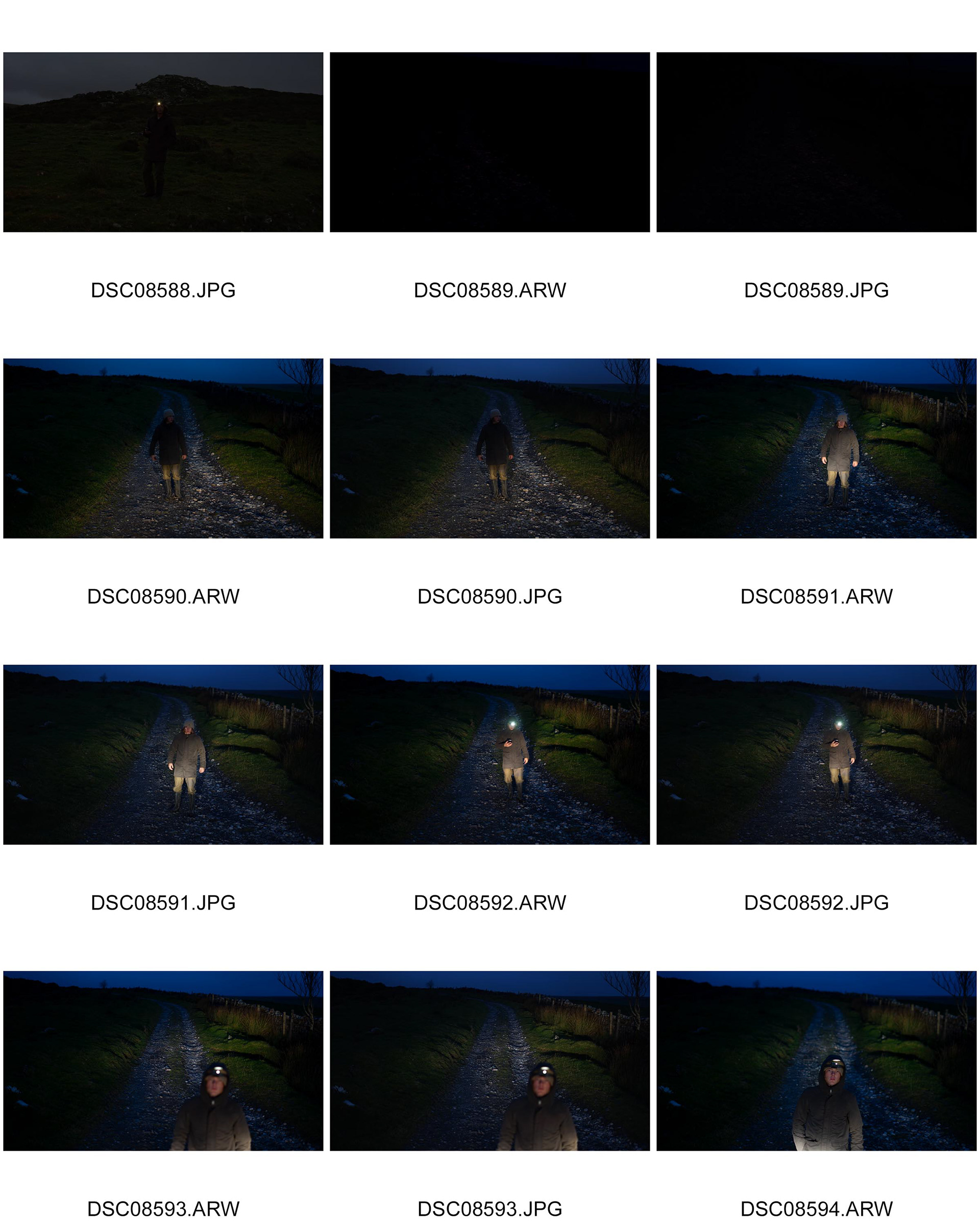
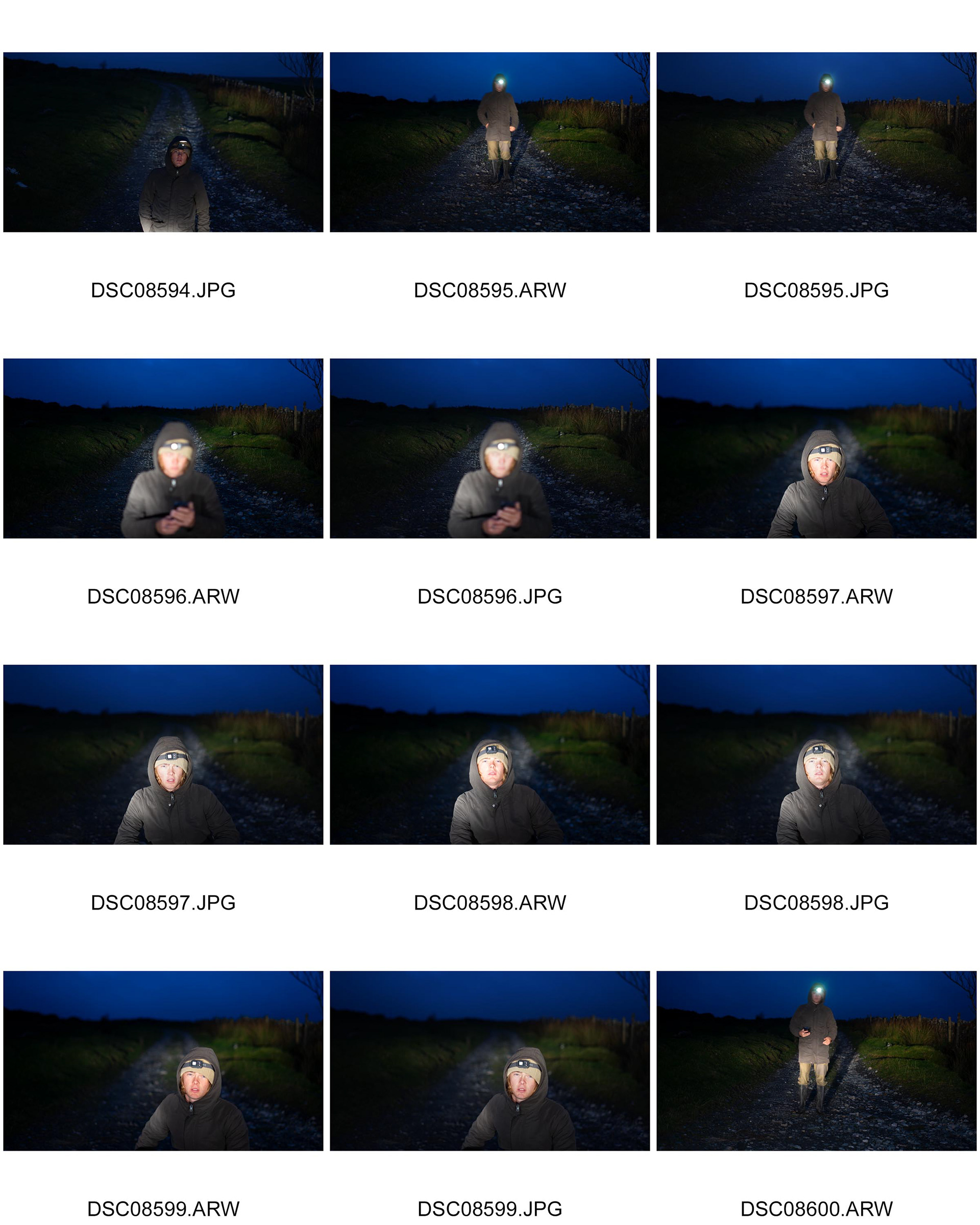

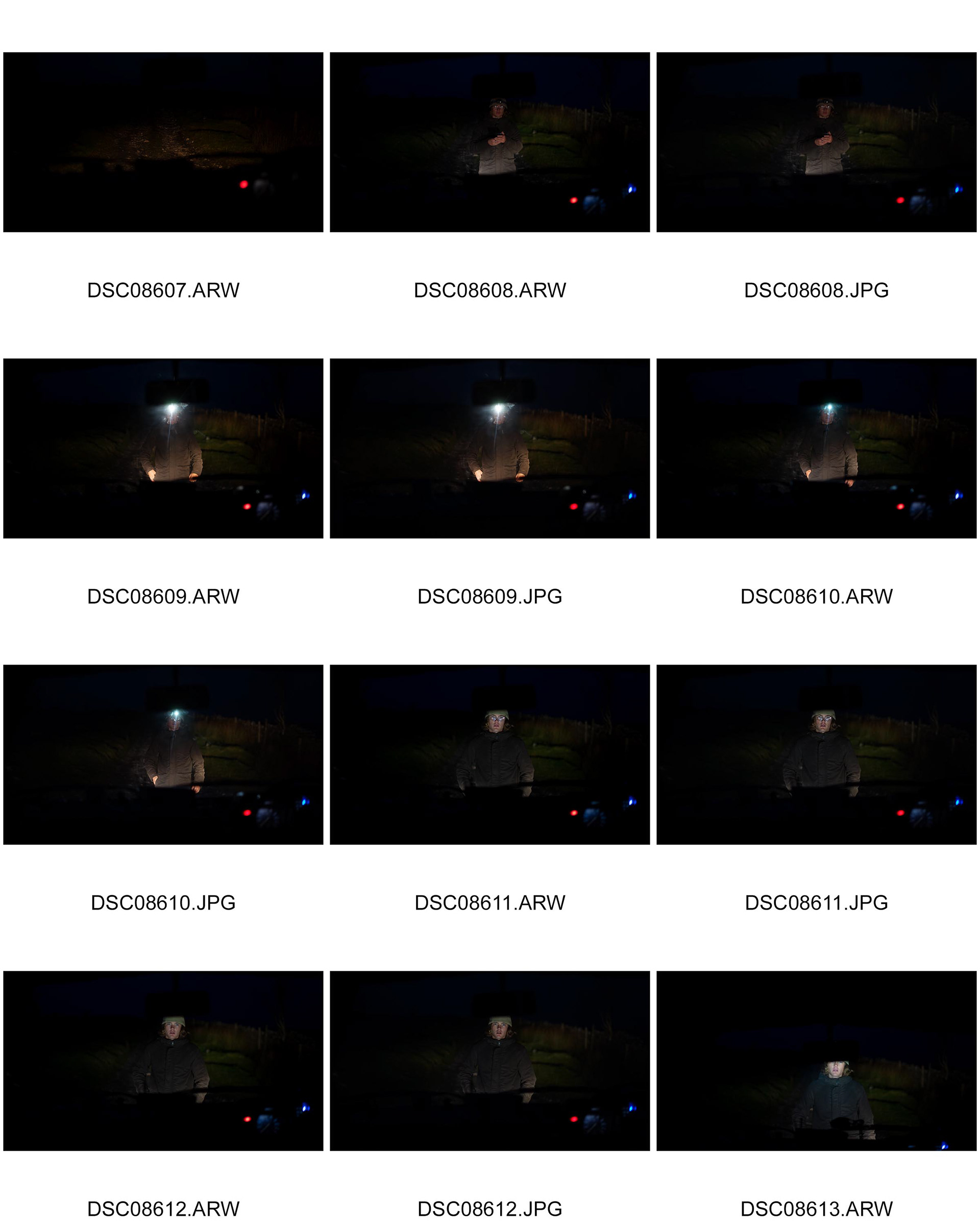

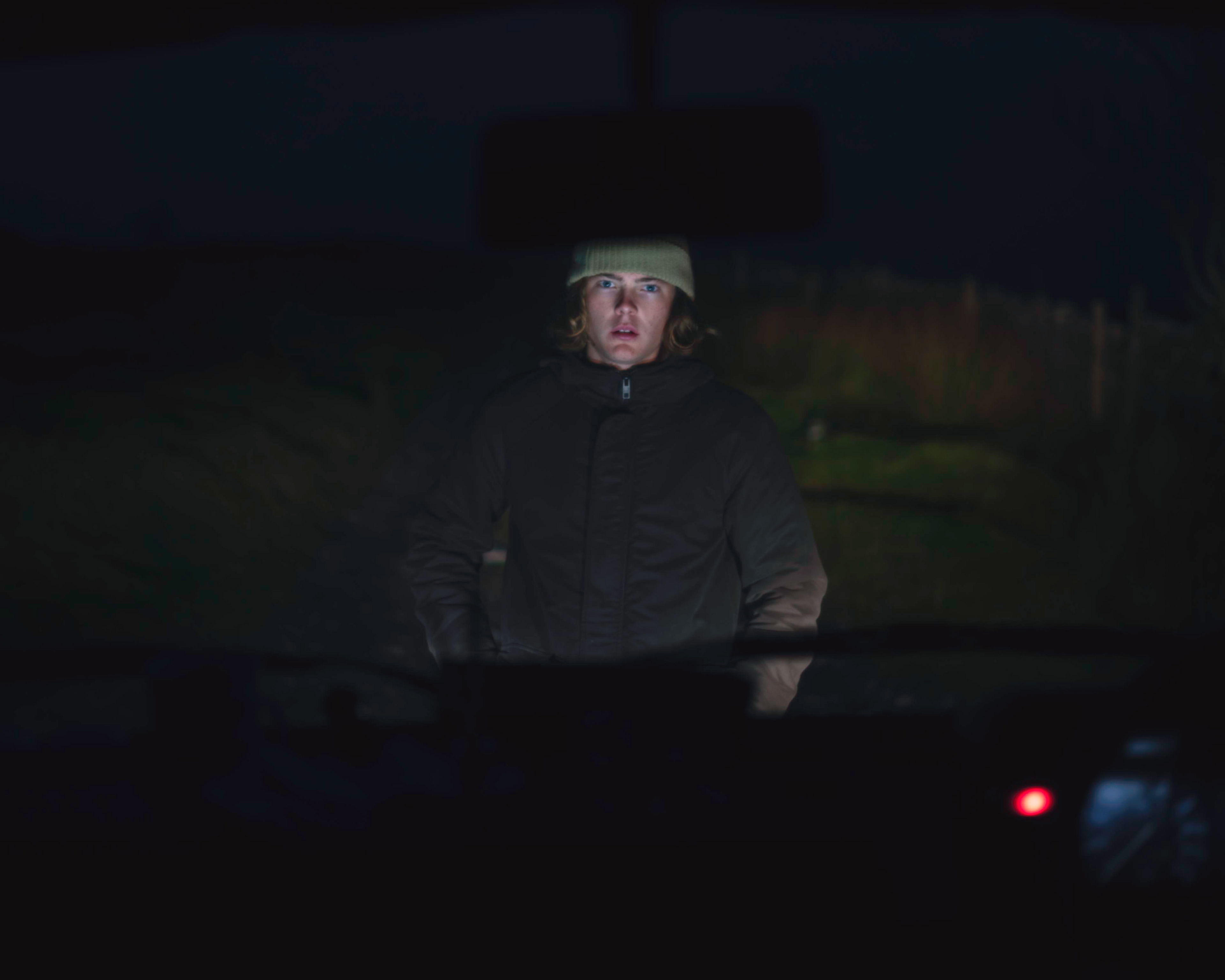
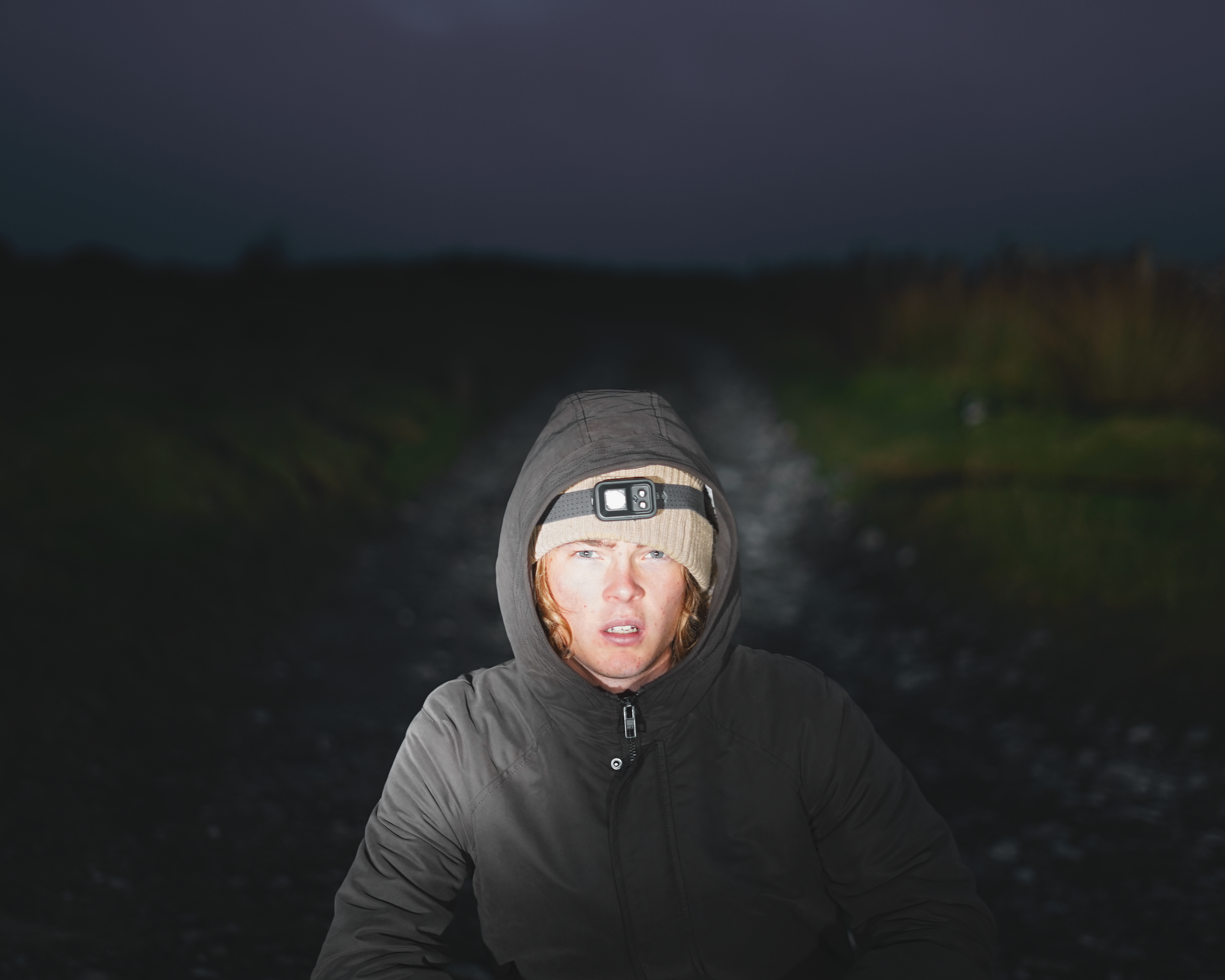
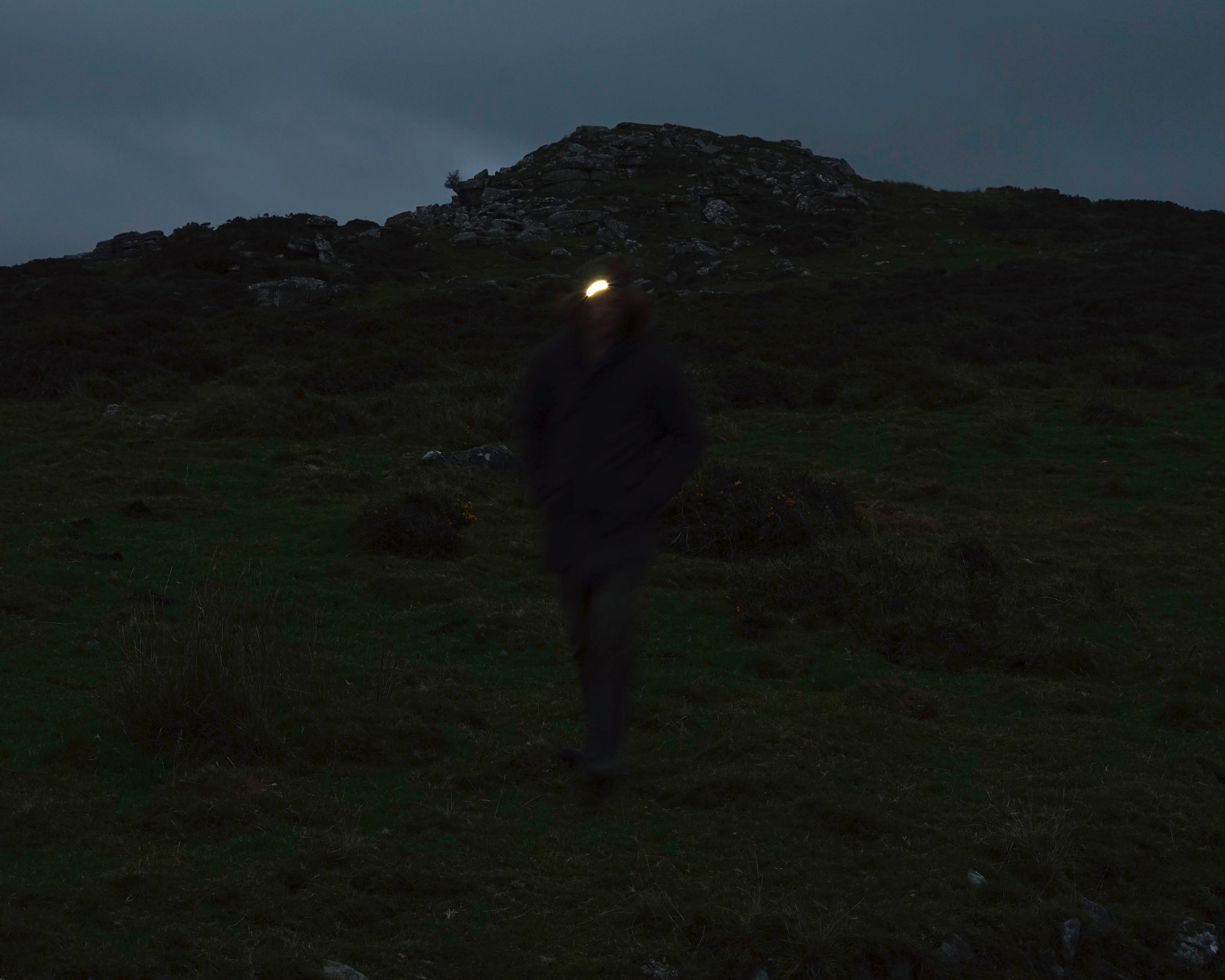

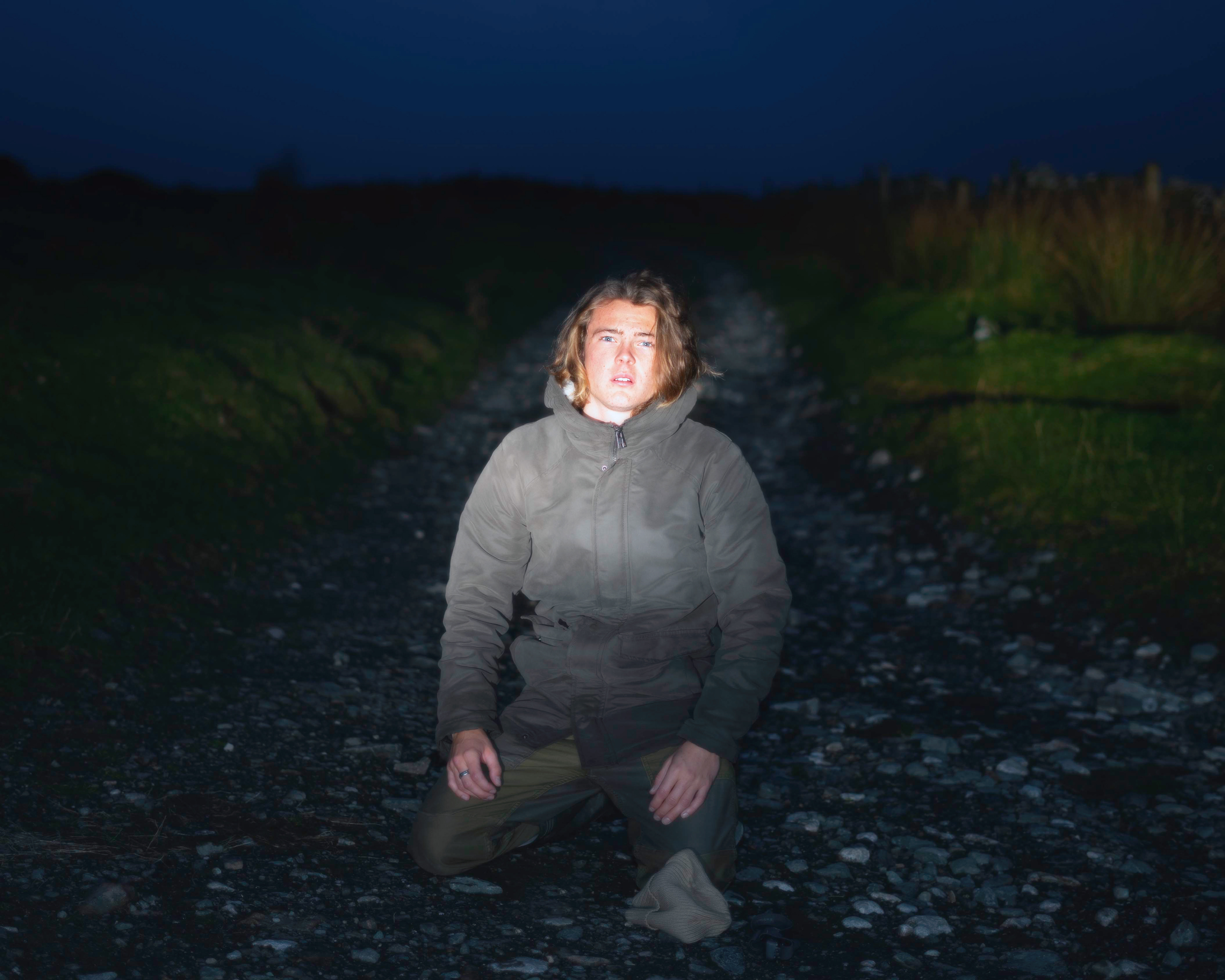
These are the idea that I explored when I went out and shot my photographs. I tried to frame some big tableaux styled photographs but soon realised that this was a very ambitious thing to attempt by myself. This is when I then focused on smaller aspects of the narrative to make some self portraits which are inspired by the idea of Mitchell finding the getaway car.
I have placed these three images in a series to emphasise the narrative that I am conveying. The idea is that the subject has been found after being on a journey, of which the difficulty of that journey is interpreted by the viewer. This idea stemmed from Frank Mitchells escape off the moor while being held at Dartmoor Prison. At first it might not be that clear that the light in the images is from a car headlight. The first photograph was shot through the inside of my van to give some context to where the light is coming from. I did this to follow the idea of Mitchell finding the getaway car once he parted from the prison group. Then the second and third image follow with the idea of getting a closer and more intimate idea of the emotions that may have been going through Mitchells head when he found the getaway car.
To edit my images I followed Thomas Browns editing tutorial on Youtube to add a cinematic edge to the edit of my images. I found this tutorial useful as I have not created many cinematic images before and did not really know where to start when editing the photographs. I think that the edit I followed gave my images that cinematic feel that I wanted. The soft parts of the image are emphasised from the heavily contrasted blacks. A blue sapia filter over the image also makes the image more cold which increases the thought of being hostile with the subject. Compared to an intimate draw that warm golden colours create in a photograph. This editing process is just the beginning of my cinematic image processing and I will develop on this throughout the project.
I think that these images are building blocks of ideas that I am going to be able to develop from. I like the idea of escaping and running away from imprisonment. It would be good for me to reshoot this idea with a model. This would allow me to put all of my focus in taking the photographs, which I think will help my ideas develop while on location. By doing this, I may be able to capture a bigger tableau image as I will be able to direct the frame and have a more accurate visual of what the images are going to look like. Going forward with the project I would also like to build on the idea of escaping and running away from what people are being trapped by. I think that I will get to a point in the project where the inspiration of the Dartmoor Prisoners run out and that I will have to build from the ideas and thoughts that I am gathering from the literal narratives of the criminals.